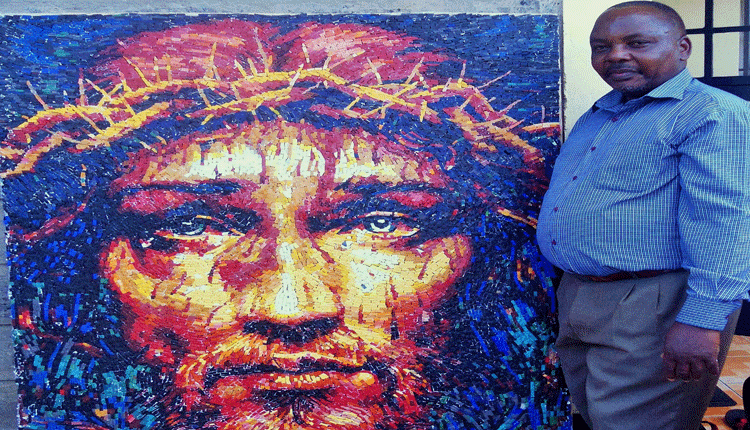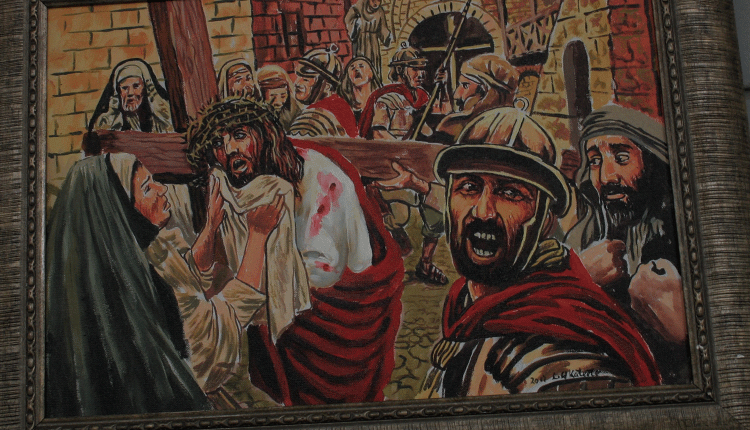Meet Leonard Kateete who rose to become one of the most revered religious artists in the region

Mwendwa Kitheka
From an early age, most forms of illustrations would often fascinate him. As he grew older, he got engrossed in varied statues, which artistically depicted Mary – complete with a halo – holding baby Jesus.
“I admired the artistry,” recounts seasoned Ugandan-born Nairobi-based painter and sculptor Leonard Kateete, 70.
Back then, a pursuit of an artistic career may have seemed to be a dream way beyond reach.
At local intermediary schools, art was not among the subjects taught during his formative classes.
Raised up as a Catholic faithful, this entailed regular church attendance. The exposure to Christian art, thus, took root at teen age whenever his parents brought him for worship at the neighbourhood parish.
This church, he vividly recalls, served as a drop-off point for religious statues earmarked for distribution to parishes located within the same region.
His fascination for religious art peaked when he was enrolled at Makerere University’s School of Arts in 1973, precisely, after an encounter with Michelangelo’s sculptures.
“I was impressed by his ability to put life into a marble or stone statue,” he tells Spice.
The biblical aphorism ‘seek and you shall find’ rings glaringly true. A spark of passion stirred at childhood blossomed over time.
Decades on, Kateete’s Christian art creations have turned into a source of livelihood and lifetime pursuit.
Owing to his array of distinctive, religious-inclined artworks, he has consistently curved a unique niche in local circles.

“It’s like a calling, I still have to read and research more on my chosen subjects’ vast historical background,” he notes.
Iconic collections
Notably, an engaging collection of Kateete’s marble statues, conspicuous murals and mosaics festoon church walls in different parishes across the country. A 10-foot marble portrait of Pope Paul VI is a significant piece.
It takes a place of pride, mounted outside the administrative blocks of Catholic University of Eastern Africa’s ultra-modern learning and resource centre in Nairobi.
An ‘African Virgin Mary’ – one of Kateete’s trademark statutes stands out at the Kahawa Sukari Catholic Church parish, and a colourful, life-size mosaic graces the wall at Our Lady of the Rosary Catholic Parish, Ridgeways.
For years now, a statue of Mary and Jesus – carved out of an ancient Jacaranda tree – still proudly ‘watches’ over the national Marian Shrine, Our Lady of Subukia grounds situated in Nakuru county.
The artist’s inspiring marble sculptures such as a pair depicting Mary Fetching Water and the Risen Christ, found a home at the Nairobi’s Tangaza College and Don Bosco Utume parish respectively.
It could be that the skilled sculptor is unwittingly perhaps, retracing footprints of ancient religious artistic forms, whose origins reportedly date back to genesis of Christian faith.
There are indicators the oldest surviving Christian paintings were created in the period before the 1st Century. Kateete also dabbles in the intricate mosaic art technique.
A mural he refers to as the Dream of Don Bosco, reflects a bold attempt to interpret the vision within the realm of both traditional and contemporary contexts.
Treasured pieces
This glittering piece provides altar backdrop at Don Bosco parish in Nairobi’s Upper Hill.
“I used an estimate half a million pieces, different coloured glass, elaborately designed to mirror the theme of Christ’s enduring love and care,” he says.
Also noteworthy is a mosaic piece titled Passion for Christ. It poignantly captures artist’s apparent, deeply embedded fascination with steps of the Messiah’s walk to the cross at Calvary.
For several months, it was on temporal display at the Consolata Shrine, in Westlands. Currently, it adorns the adoration Chapel of the Holy Cross congregation-run Catholic parish in Dandora.
He is, however quick to acknowledge that this particular mosaic artwork may have been largely inspired after he repeatedly watched the box office movie Passion of Christ.
“I used uncut and pre-made glass pieces, which I cut to specific tailor-made shapes. This was the only way I could depict the crown of thorns on Christ’s head, with the blood trickling down his face on the cross.
The face reflected on this piece is nonetheless symbolic – but the message hinges on Christ’s boundless love for mankind. He sacrificed his life and privileges as the Son of God for the sake of all mankind,” explains Kateete.
This mosaic used slightly over 400 pieces of coloured glass, sourced from varied raw materials.
They may range from cobalt, gold to assorted glass-based gemstone pieces, but first exposed to heat for acquired colour shades.
“These are not available locally and have to be imported from the Far East. The origins of mosaic glass technique are traced to Italy, widely believed as birthplace of religious and Christian art,” he adds.
The National Museums of Kenya’s art curator Lydiah Galavu remarks that some of Kateete’s artworks comprise their gallery’s treasured collections.
“His art is distinctive and easily stands out, especially for group exhibitions. We have a diverse range of his life-size oil paintings and sculptures on display for some of our museum’s permanent exhibitions,” notes Galavu.
Though the artist has worked on more commissions for marble rock religious sculptures, mosaic was not his first medium of artistic expression.
He began to explore his creative skills using dried banana fibre in high school, with art among his favourite subjects.
“I noticed that over time, the fibre acquires different colour shades. This enabled me to experiment, making portraiture, landscape and animal pieces using mosaic technique,” he recalls.
Mosaic art’s popularity flourished in the ancient BC era. Back then, the church would involve artists to communicate Christianity doctrines using illustrations, as most ordinary folks were not educated enough to read.
“This technique is ideal for making decorative or interior art décor. Mosaics can be made from small, roughly-shaped or smooth square glass or stone pieces,” notes the artist in conclusion.












